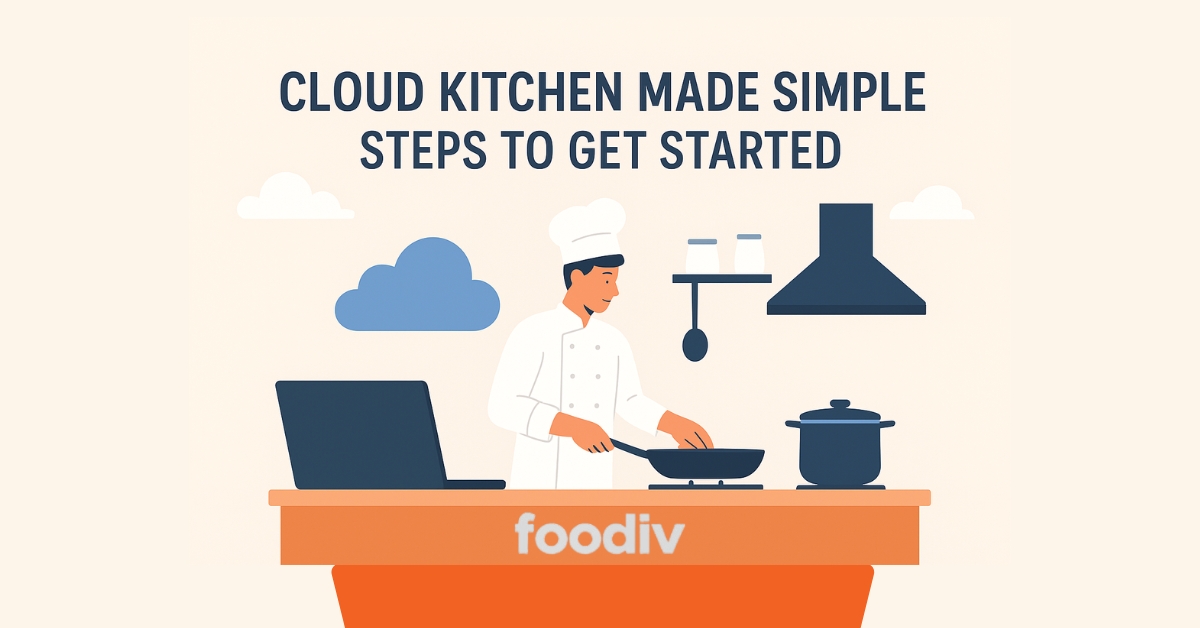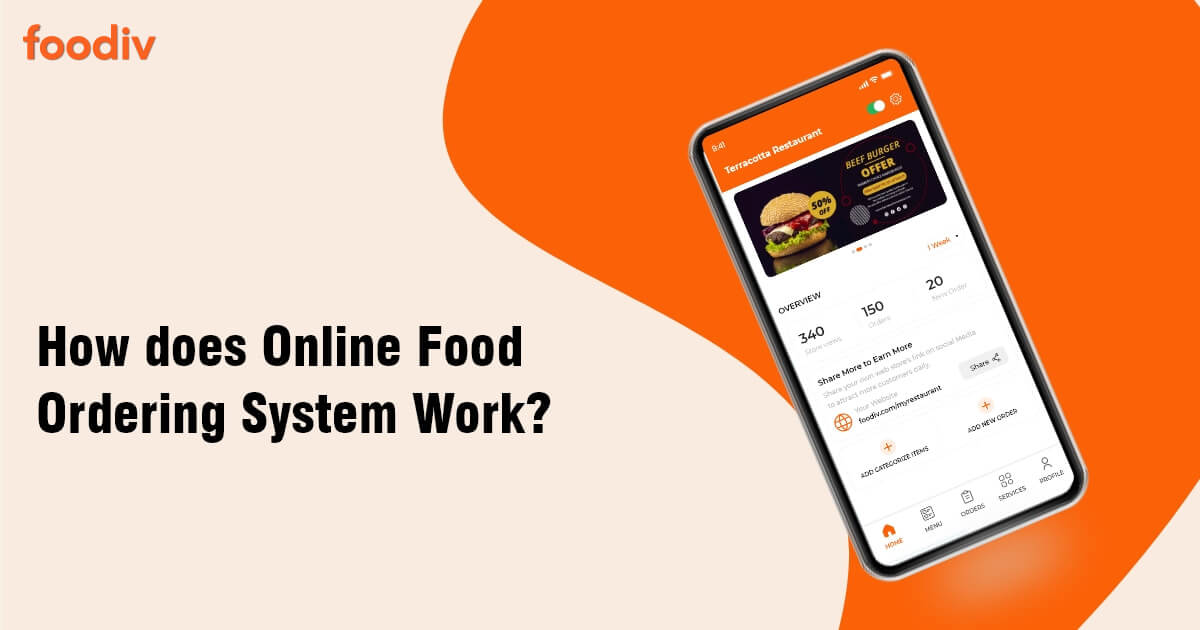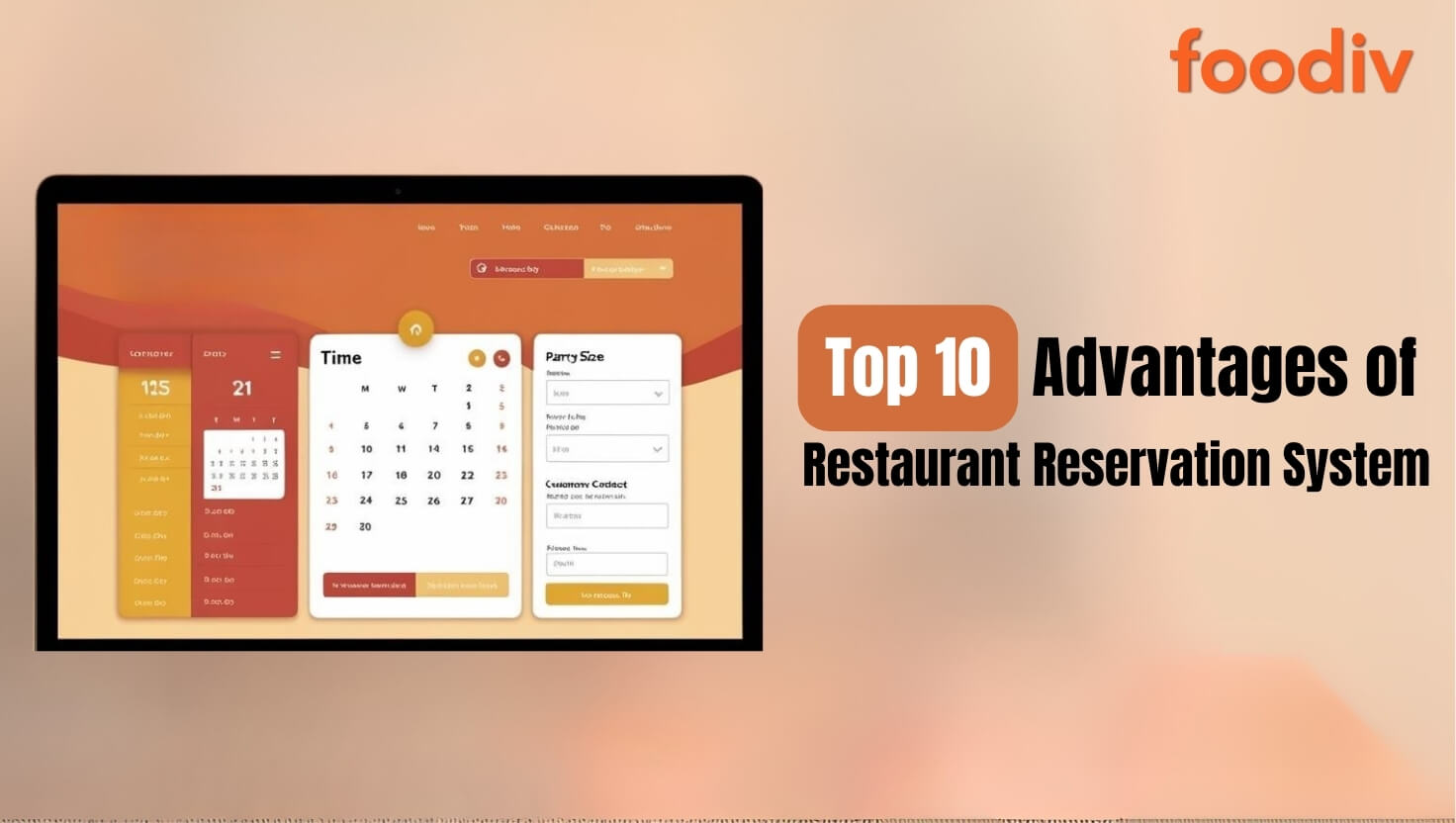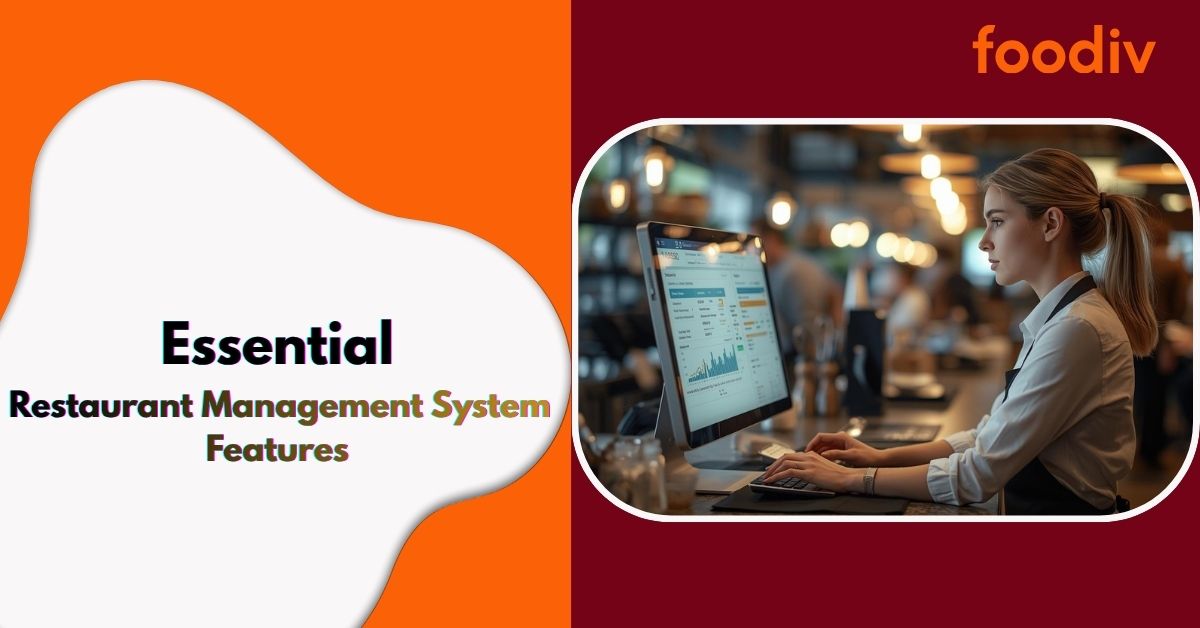
The food industry is rapidly evolving, and one of the most significant transformations in recent years has been the rise of cloud kitchens. A cloud kitchen is a commercial cooking facility that focuses entirely on preparing food for delivery and takeaway orders. Unlike traditional restaurants, it does not require a dining area or elaborate interiors. This makes it an attractive option for new entrepreneurs as it involves lower investment and offers greater flexibility.
The cloud kitchen concept works by setting up a professional kitchen space, listing your food offerings on popular delivery platforms, and fulfilling orders directly to customers through delivery partners. Customers never visit the physical location, but they experience your food and brand through online ordering channels. This ghost kitchen model has become a preferred choice for start-ups, home chefs, and established restaurants looking to expand their delivery business without the heavy costs of opening new outlets.
Starting a Cloud Kitchen Business is not just about cooking delicious meals; it requires strategic planning, compliance with food safety standards, proper market analysis, and the integration of technology for smooth operations. It is essential to approach the process step by step to ensure sustainable growth and consistent customer satisfaction.
What is a Cloud Kitchen and Why it is Important?
A cloud kitchen, sometimes known as a virtual kitchen or ghost kitchen, is designed specifically for fulfilling online food orders. It eliminates the need for a storefront or waitstaff, allowing owners to focus on the core aspects of food preparation, packaging, and delivery. This model helps reduce operational costs while enabling you to reach a broader audience through online platforms.
The demand for online food delivery is at an all-time high due to changing consumer lifestyles, busy schedules, and the convenience of ordering food with a few taps on a smartphone. For entrepreneurs, this represents an enormous opportunity to create specialized brands that cater to niche tastes, dietary preferences, or emerging food trends. Whether you want to start small from your home kitchen or set up a multi-brand facility, understanding the correct steps to start a cloud kitchen will save you from costly mistakes and delays.
Step 1: Market Research and Concept Development
The foundation of a successful cloud kitchen lies in understanding the market you plan to serve. Market research allows you to make informed decisions rather than relying on guesswork. This step helps you identify what customers want, how they behave when ordering food online, and what gaps exist in the current food delivery market. A well-developed concept built on solid research increases your chances of standing out in a competitive space.
Research the Market and Understand Demand
Begin by analyzing food delivery trends in your chosen area. Look at the types of cuisine that are most popular and the times when orders peak. Explore leading food delivery platforms to observe the pricing, menus, and promotions offered by other cloud kitchens and restaurants. Read customer reviews to learn about their preferences and complaints. This information will help you determine whether your target audience is looking for quick meals, health-focused dishes, family-sized packages, or gourmet options.
- Customer Behavior: Study food ordering patterns, average spending, and preferred meal timings to understand demand better.
- Competitor Mapping: Identify existing players, their strengths, and their weaknesses to spot opportunities for differentiation.
- Trend Observatio:n Keep an eye on emerging food trends such as plant-based diets, gluten-free items, or regional specialties.
Define a Clear Concept for Your Cloud Kitchen
After collecting market data, the next step is to develop a concept that reflects your strengths and market needs. Decide on the cuisine or type of food you will specialize in. It could be comfort food, fitness meals, or a regional favorite that is not widely available through delivery platforms. Your concept should also include your pricing strategy and target audience. A clear and concise concept helps you create a menu that is easy to execute and appealing to customers.
- Choose Your Cuisine: Pick one or two core themes to start with instead of offering too many options.
- Identify Your Target Audience: Define whether you are serving students, office workers, families, or health-conscious customers.
- Set Your Unique Selling Proposition: Decide what will make your brand different, such as quick delivery, premium ingredients, or a niche menu.
Validate Your Concept Before Launch
Validation saves you from costly mistakes. Start with a small-scale trial to gather real feedback. You can prepare a limited menu and test it with a small group of people or through a soft launch on food delivery apps. Collect their opinions on taste, portion size, pricing, and packaging. Adjust your concept based on their feedback before investing in a full-scale setup. This simple step helps refine your idea and ensures it has a place in the market.
Step 2: Business Plan and Funding
A business plan acts as a roadmap for your cloud kitchen business. It not only helps you stay organized but also makes your project more appealing to potential investors or financial institutions. Without a well-prepared plan, it is difficult to manage expenses, forecast profits, or measure progress effectively. Alongside planning, securing the right funding ensures that you have enough resources to launch and sustain the business in its early stages.
Create a Clear Business Plan
Your business strategy should describe what your cloud kitchen will offer, who it will serve, and how it will operate. Include details about your business concept, the type of food you will deliver, and the target audience you intend to reach. Outline your operational model, such as the size of the kitchen, staffing requirements, suppliers, and delivery process. A strong cloud kitchen business plan should also include marketing strategies and projections for sales and profits during the first year.
- Executive Summary: Summarize your concept, mission, and the purpose of your cloud kitchen.
- Operational Strategy: Explain how you will manage sourcing, preparation, packaging, and delivery.
- Marketing and Sales: Include a clear strategy for promoting your kitchen on online platforms and through local channels.
- Financial Forecast: Provide expected costs, revenue estimates, and your break-even point.
Estimate Startup and Operating Costs
Understanding the financial requirements of your cloud kitchen is essential. Calculate the costs of renting or setting up a kitchen space, buying necessary equipment, acquiring licenses, and arranging technology for order management. Consider recurring expenses such as staff salaries, ingredients, utilities, and packaging materials. When you have a detailed estimate, you will know how much funding you need to begin operations and sustain them until your kitchen becomes profitable.
- Startup Costs: Include rent deposits, kitchen setup, initial inventory, and legal registration fees.
- Monthly Expenses: Calculate salaries, utilities, delivery charges, and marketing efforts.
- Emergency Fund: Keep a reserve to cover unexpected expenses during the first few months.
Explore Funding Options
Once you know your financial requirements, you can explore various funding options. Top cloud kitchens start small with personal savings, which helps maintain full ownership. Others borrow from friends or family to get started quickly. If your project is larger, consider small business loans or partnerships with investors who can provide both capital and guidance. Present your business plan to potential lenders or partners to build confidence in your project.
- Self-Funding: Use your own savings to maintain full control and avoid debt in the initial phase.
- Loans and Credit: Apply for small business loans or government-supported schemes if available.
- Investors: seek angel investors or business partners who believe in your concept and are willing to support it financially.
Step 3: Legal Requirements and Licensing
Complying with legal regulations is a critical step in setting up a cloud kitchen. It not only helps you avoid legal complications but also builds trust among customers and delivery partners. A legally compliant business can operate smoothly, attract collaborations, and gain recognition from food delivery platforms without unnecessary delays. Every region has its own set of rules, so make sure you follow the guidelines that apply in your area.
Register Your Business
The first step is to register your cloud kitchen as a legal entity. Depending on your business size and future goals, you may choose to operate as a sole proprietorship, partnership, or private limited company. Registration formalizes your operations, provides you with a business identity, and makes it easier to handle financial transactions. It also helps when applying for loans, partnerships, or business expansion.
- Sole Proprietorship: Best for small, home-based cloud kitchens with minimal investment.
- Partnership: Suitable for ventures started by two or more people sharing responsibilities.
- Private Limited Company: Recommended for larger businesses that plan to scale and attract investors.
Obtain Food Safety and Hygiene Licenses
Since cloud kitchens deal with food preparation and delivery, food safety is a top priority. You must obtain the necessary food safety and hygiene certifications to ensure your kitchen complies with health standards. These licenses reassure customers that your food is safe for consumption and handled under proper guidelines. The requirements may include food handler permits, sanitation certificates, or health department approvals depending on local regulations.
- Food Safety License is Essential for ensuring that all food items are prepared in a hygienic environment.
- Health Permits are required by many local authorities to maintain compliance with sanitation norms.
- Regular Inspections: Be prepared for periodic inspections to keep your licenses valid.
Fulfill Additional Legal Obligations
In addition to food safety certifications, you may need other licenses and permits. These may include fire safety clearances, GST or sales tax registration, and trade licenses depending on your location. It is also wise to obtain liability insurance to protect your business against unforeseen incidents. Proper documentation helps you establish credibility and prevents interruptions once your kitchen becomes operational.
- Tax Registration helps manage sales tax or GST compliance efficiently.
- Fire and Safety Approvals ensure your online kitchen meets all safety standards.
- Insurance protects against damages, accidents, or legal claims.
Step 4: Choose the Right Location and Cloud Kitchen Setup
Location plays an important role in the success of a cloud kitchen, even though customers do not visit it physically. The right location allows you to serve a wider audience, reduce delivery times, and manage operating costs effectively. After choosing the location, the kitchen setup must be planned carefully to ensure smooth food preparation, packaging, and dispatch processes.
Select a Location that Matches Your Market
Start by identifying areas with high demand for food delivery. These may include residential neighborhoods with young professionals, student communities, or office zones where quick meal delivery is in demand. Analyze delivery platform data to find locations where order volumes are high but competition is manageable. Choose a place that balances affordability with accessibility for your delivery partners.
- Delivery Reach: Pick a location that allows you to deliver within 30 to 45 minutes to your target audience.
- Cost Efficiency: Rent or lease in areas that offer a balance between reasonable pricing and good connectivity.
- Accessibility: Ensure the area is easily reachable by suppliers and delivery agents.
Plan Your Kitchen Layout
A well-designed kitchen improves productivity and minimizes delays. The layout should allow a smooth flow of activities from receiving raw materials to food preparation, packaging, and dispatch. Assign specific areas for storage, cooking, cleaning, and packaging to avoid clutter and cross-contamination. Use equipment that saves time without compromising food quality.
- Cooking Zone: Install stoves, ovens, and fryers in an organized manner for easy workflow.
- Storage Area: Keep dry and cold storage separate to maintain ingredient freshness.
- Packaging Station: Designate a dedicated space where meals are packed and labeled.
Ensure Compliance with Safety and Hygiene Standards
The cloud kitchen must meet health and safety requirements as defined by local authorities. Proper ventilation, fire safety equipment, and waste management systems should be in place. Regular cleaning routines, pest control, and proper waste disposal not only protect your license but also improve customer trust. Investing in basic safety infrastructure reduces risks and ensures smooth inspections in the future.
- Fire Safety: Install extinguishers, smoke alarms, and follow fire department guidelines.
- Ventilation: Ensure proper air circulation to maintain a comfortable cooking environment.
- Hygiene Practices: Train staff to maintain cleanliness and food handling standards.
Step 5: Menu Planning and Packaging
The menu is the core of your cloud kitchen business. It determines your identity, attracts customers, and affects operational efficiency. A well-designed menu should align with your concept, be easy to execute, and remain profitable. Packaging, on the other hand, ensures that food reaches customers in perfect condition while maintaining its taste and appeal.
Design a Menu that Reflects Your Concept
Your menu should be focused and not overcrowded with too many dishes. Start with items that match your cloud kitchen’s concept and can be prepared quickly without compromising quality. Choose dishes that have good demand in your target area and can be delivered without losing their texture or flavor. The aim is to balance variety with operational simplicity.
- Popular Dishes: Include meals that are already in demand based on your market research.
- High-Margin Items: Add dishes that generate better profits without increasing preparation costs significantly.
- Scalable Options: Plan for menu items that can be expanded or modified as your business grows.
Set Pricing that Balances Value and Profit
Pricing should be competitive while ensuring you make a profit. Consider ingredient costs, preparation time, packaging expenses, and delivery fees. Study competitor pricing to position yourself appropriately. Avoid underpricing as it can lower perceived value, but also avoid overpricing which can discourage first-time buyers.
- Cost Analysis: Calculate the total cost of each dish before finalizing prices.
- Competitive Benchmarking: Compare your prices with similar offerings in your area.
- Psychological Pricing: Use simple and rounded price points to make ordering easy.
Invest in Practical and Safe Packaging
Packaging plays a critical role in customer satisfaction. It must keep food warm, prevent leakage, and remain eco-friendly if possible. Clear labeling with the dish name and preparation time adds a professional touch. Well-designed packaging also helps in branding, as it is often the first physical interaction customers have with your cloud kitchen.
- Food Safety: Use materials that are food-grade and safe for hot and cold items.
- Eco-Friendly Materials: Consider recyclable or biodegradable packaging options.
- Brand Visibility: Add your logo, colors, or simple branding elements for recognition.
Step 6: Selecting the Right Technology and Integrations
Technology is the backbone of a successful cloud kitchen. It helps manage online orders, streamline operations, and improve customer experience. Choosing the right tools can save time, reduce errors, and allow you to focus on food quality and timely delivery. Integration with reliable platforms also makes your kitchen visible to more customers and keeps processes organized.
Adopt a Robust Order Management System
A good order management system is essential to keep track of incoming orders from multiple channels. It ensures that no order is missed and helps staff prepare food on time. This food ordering and management system should integrate with popular food delivery platforms as well as your own website or app if you have one. A centralized order dashboard saves effort and prevents confusion.
- Multi-Channel Support: Manage orders from third-party delivery apps and direct platforms in one place.
- Real-Time Updates: Track new orders, preparation status, and delivery timelines instantly.
- Automated Notifications: Inform customers about their order status without manual effort.
Use Software for Inventory and Supplier Management
Inventory management is critical in a cloud kitchen. Running out of key ingredients or overstocking can affect both costs and customer satisfaction. A reliable inventory management system helps track ingredient usage, forecast demand, and reduce wastage. Integrating this with supplier management tools makes reordering smooth and ensures that your kitchen never faces sudden shortages.
- Stock Tracking: Monitor available ingredients in real time to avoid delays.
- Supplier Integration: Link with suppliers to reorder stock automatically when levels are low.
- Waste Reduction: Identify items with low movement to reduce spoilage and save money.
Integrate Payment and Analytics Tools
Seamless payments and performance tracking help your business grow steadily. Multiple payment options make ordering convenient for customers. Analytics tools, on the other hand, provide insights about your sales trends, popular dishes, and peak ordering times. These insights help you plan better promotions, improve menu performance, and optimize operations over time. Exploring the benefits of cloud kitchen software can help you choose a platform that combines these features effectively.
- Multiple Payment Modes: Accept cards, digital wallets, and cash-on-delivery for flexibility.
- Sales Analytics: Use data to identify top-performing dishes and busy hours.
- Customer Insights: Understand preferences and buying habits for better marketing decisions.
Step 7: Branding, Marketing, and Promotions
Branding and marketing are essential to make your cloud kitchen stand out in a competitive market. A strong brand identity helps customers recognize your business, while consistent marketing efforts drive orders and build loyalty. Promotions, when done effectively, create excitement and attract first-time buyers who can become repeat customers.
Build a Memorable Brand Identity
Your brand is more than just a logo. It represents your values, food quality, and overall customer experience. Choose a name that reflects your cuisine and is easy to remember. Visual elements such as colors, fonts, and packaging should remain consistent across all platforms. Consider exploring creative cloud kitchen names to establish a strong first impression in the market.
- Logo and Design: Create a professional logo that is simple yet memorable.
- Brand Story: Share your vision and inspiration to connect with customers.
- Consistent Branding: Use the same visual elements across your website, packaging, and delivery apps.
Leverage Digital Marketing Channels
Leading cloud kitchens thrive online, so your marketing strategy should focus on digital channels. Social media platforms allow you to share images, videos, and updates to engage potential customers. Search engine optimization improves your visibility when customers look for nearby food options. Collaborations with food influencers can further increase reach.
- Social Media Presence: Post engaging content on Instagram, Facebook, and other platforms.
- SEO Practices: Optimize your website to rank for local food delivery searches.
- Influencer Marketing: Partner with micro-influencers to reach niche audiences.
Run Effective Promotions and Offers
Promotions help you gain attention, especially in the early stages of your business. Discounts on first orders, free delivery thresholds, and limited-time combos attract customers to try your menu. Over time, loyalty programs encourage repeat orders and help maintain a steady customer base without heavy advertising costs.
- Introductory Offers: Provide limited-time discounts to encourage trials.
- Combo Deals: Offer meal bundles to increase average order value.
- Loyalty Programs: Reward returning customers with points or discounts.
Step 8: Order Management and Delivery Logistics
Order management and delivery logistics are crucial for ensuring smooth operations in a cloud kitchen. Efficient handling of orders improves customer satisfaction, minimizes delays, and helps in maintaining food quality during delivery. A well-planned delivery system also enhances your brand reputation by ensuring timely and safe delivery of food.
Streamline Order Processing
Efficient order processing starts with a system that manages orders from multiple channels in one place. This allows your staff to prepare food without missing any requests. Clear communication between the kitchen staff and delivery team reduces errors and keeps customers updated about their order status.
- Centralized Order Dashboard: Combine orders from delivery apps and direct platforms.
- Real-Time Status Updates: Inform customers about order confirmation, preparation, and dispatch.
- Efficient Workflow: Assign roles so every staff member knows their task during peak hours.
Choose Reliable Delivery Partners
Reliable delivery partners ensure that your food reaches customers on time and in good condition. Third-party delivery platforms provide wide coverage, while in-house delivery can give you more control over the process. Evaluate both options to find the best fit for your business model.
- Third-Party Platforms: Use established delivery services to reduce initial logistics setup costs.
- In-House Delivery: Employ your own riders for better control over food handling.
- Hybrid Approach: Combine both methods to cover more areas and handle peak demands.
Maintain Food Quality During Delivery
Food quality must remain consistent from kitchen to doorstep. Proper packaging, temperature maintenance, and quick dispatch reduce complaints and improve customer trust. Delivery staff should handle food with care and avoid unnecessary delays. Special instructions for hot and cold items help keep food fresh upon arrival.
- Temperature Control: Use insulated bags or boxes to keep food at the right temperature.
- Proper Packaging: Seal containers to prevent leakage during transit.
- Fast Dispatch: Ensure orders leave the kitchen as soon as they are ready.
Step 9: Monitor, Scale, and Optimize
Once your cloud kitchen is operational, the next step is to monitor its performance, scale gradually, and continuously optimize operations. A cloud kitchen is not just about starting strong but about sustaining growth by making data-driven decisions and refining processes based on customer feedback and market trends.
Monitor Performance Regularly
Regular performance monitoring helps you identify what is working well and what needs improvement. Track your sales, expenses, and customer satisfaction scores to ensure the business stays profitable. Use data analytics tools to understand trends and adjust your strategies when necessary.
- Sales Reports: Analyze daily and weekly revenue to track progress.
- Customer Feedback: Collect reviews to identify improvement areas.
- Operational Metrics: Measure food order preparation and delivery times for better efficiency.
Plan for Gradual Scaling
Scaling a cloud kitchen should be done in stages to avoid unnecessary risks. Once your kitchen reaches consistent demand, you can expand by adding new locations, introducing more cuisines, or collaborating with additional delivery partners. Ensure that your infrastructure and staff are ready before scaling.
- Expand Menu Offerings: Introduce new dishes based on customer preferences.
- Open New Locations: Target areas with strong demand and less competition.
- Increase Delivery Radius: Partner with more platforms to reach new customers.
Continuously Optimize Operations
Optimization is an ongoing process in the cloud kitchen model. Adjust your marketing strategies, update menu items, and improve packaging based on seasonal trends and customer behavior. Technology upgrades also help in reducing errors and improving efficiency over time.
- Menu Refinement: Remove low-performing dishes and add trending options.
- Cost Control: Negotiate with suppliers and optimize ingredient use.
- Technology Upgrades: Adopt tools that enhance delivery, inventory, and order tracking.
Conclusion
Starting a cloud kitchen involves more than just preparing good food. It is a strategic process that combines planning, technology, and customer experience. From market research and business planning to branding, delivery, and continuous optimization, every step plays a role in building a sustainable venture. A well-managed cloud kitchen business can offer flexibility, lower operational costs, and a scalable business model compared to traditional restaurants.
By following the steps outlined above, foodpreneurs can minimize risks and create a kitchen that thrives in the competitive online food delivery market. It is important to remain adaptable, track performance, and refine strategies regularly to meet changing customer demands. Technology plays a significant role here, especially when it comes to managing food orders and delivery efficiently.
Using a reliable Cloud Kitchen Ordering System can simplify many operational challenges. It allows you to integrate orders, monitor performance, and maintain smooth coordination between kitchen staff and delivery services. This makes your business more efficient and customer-friendly while preparing you for growth and expansion in the future.











